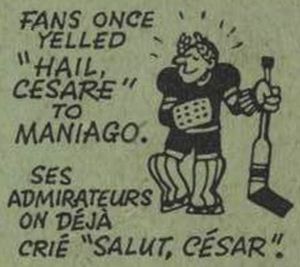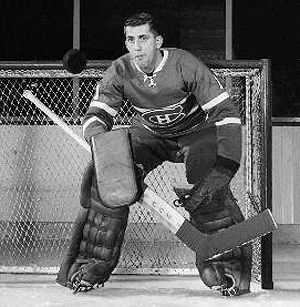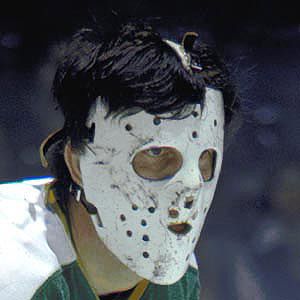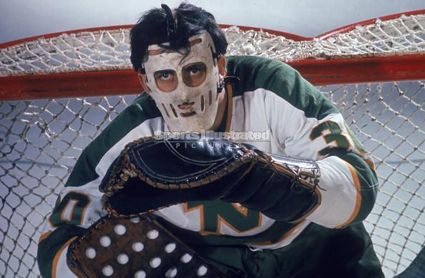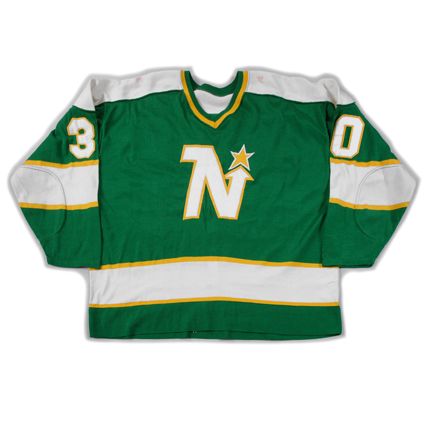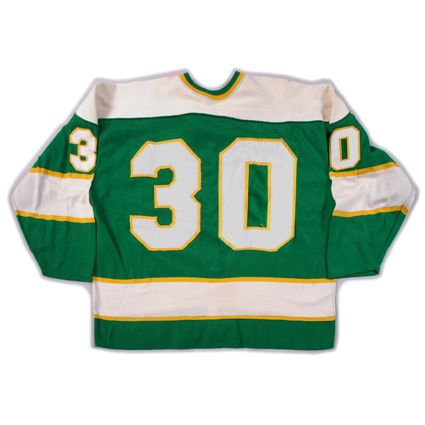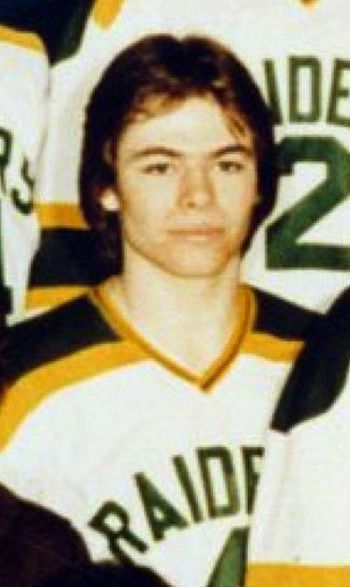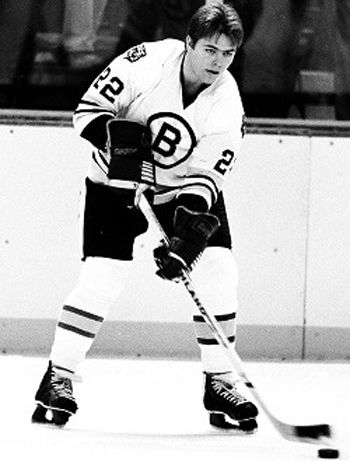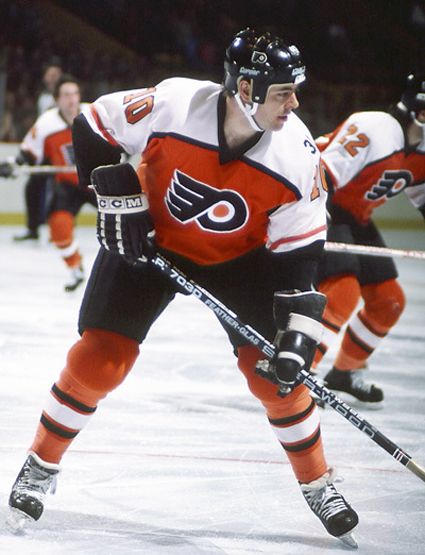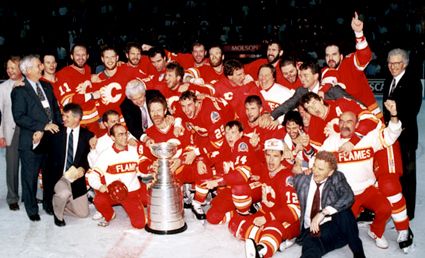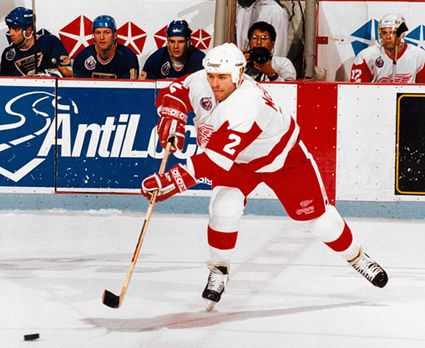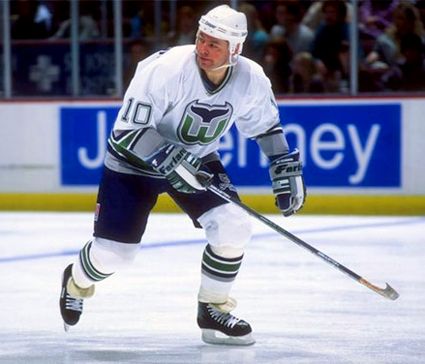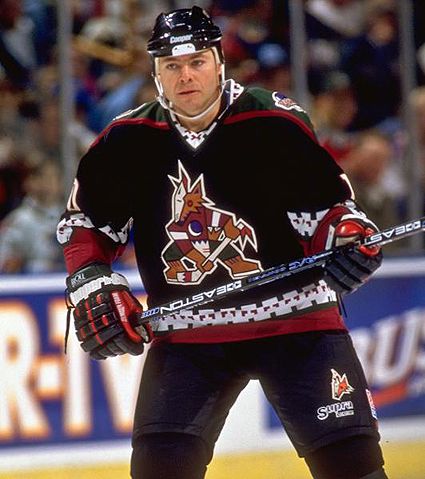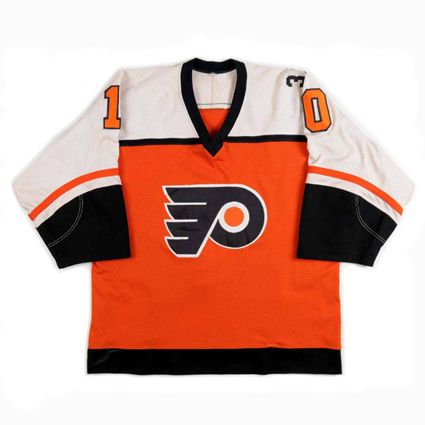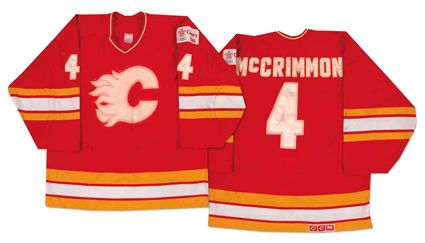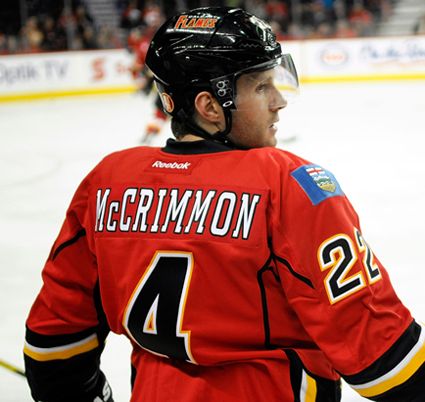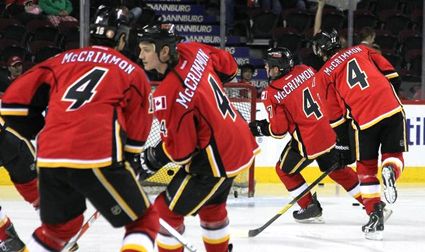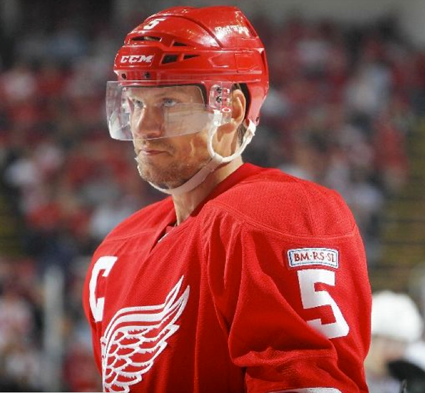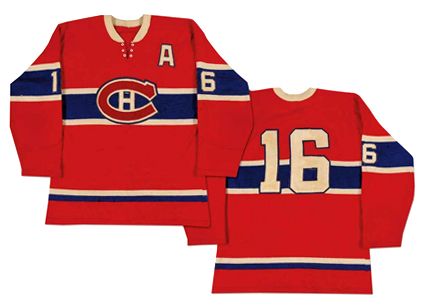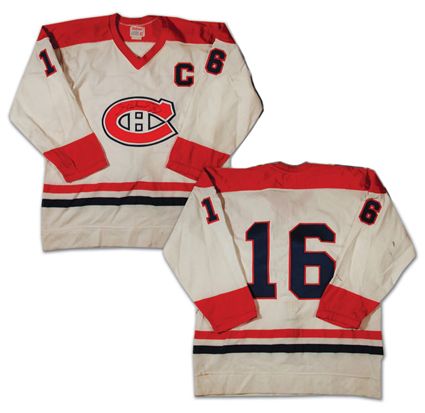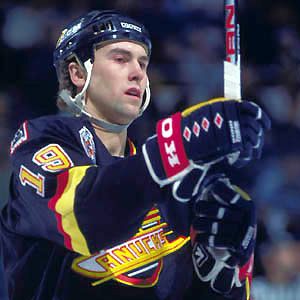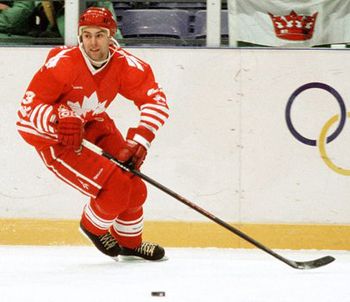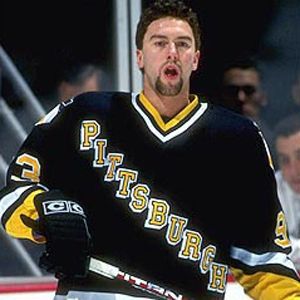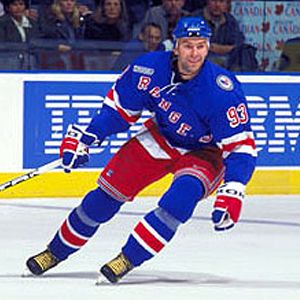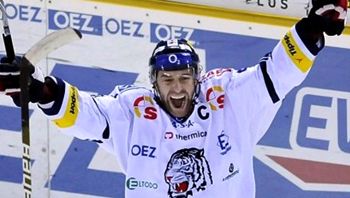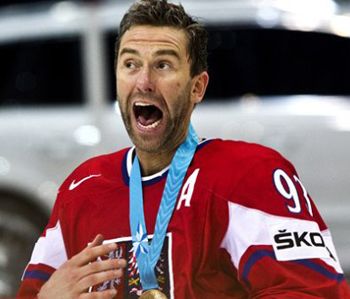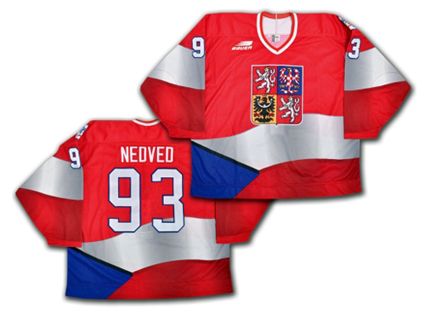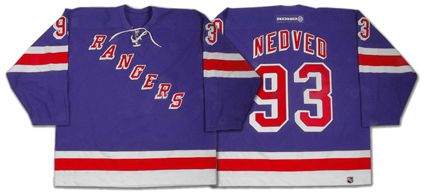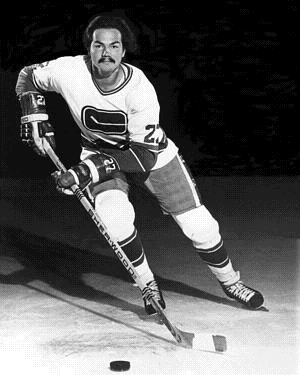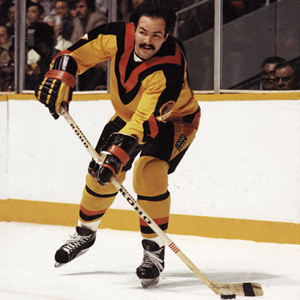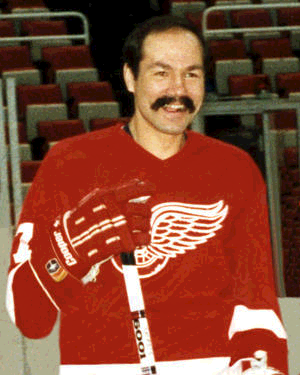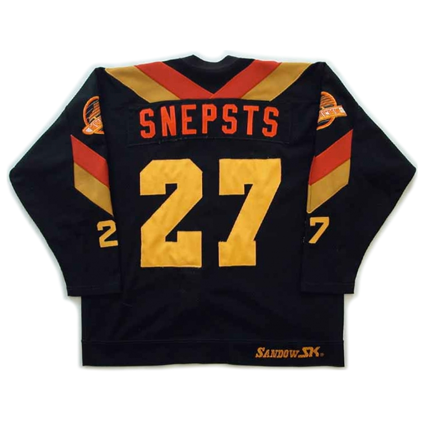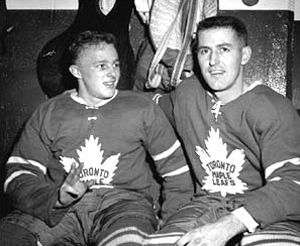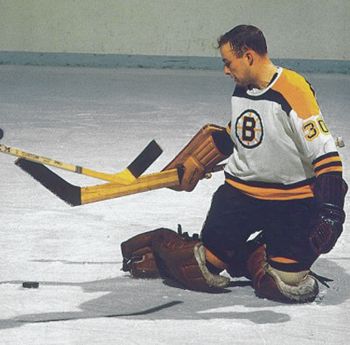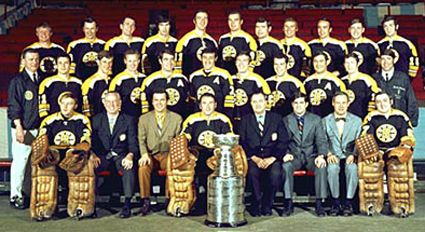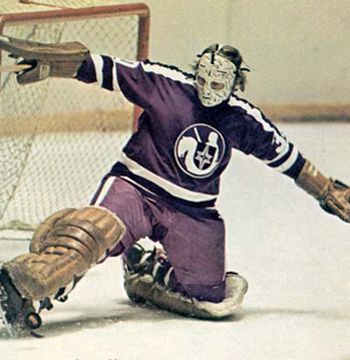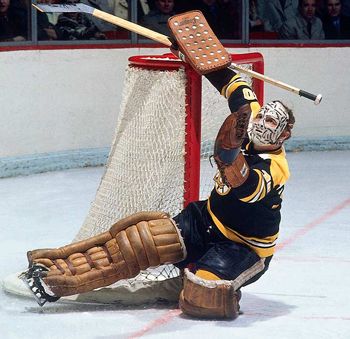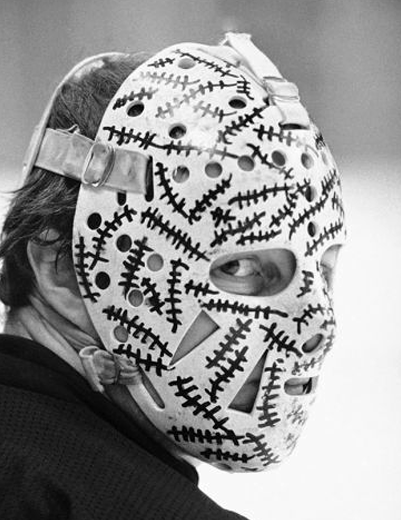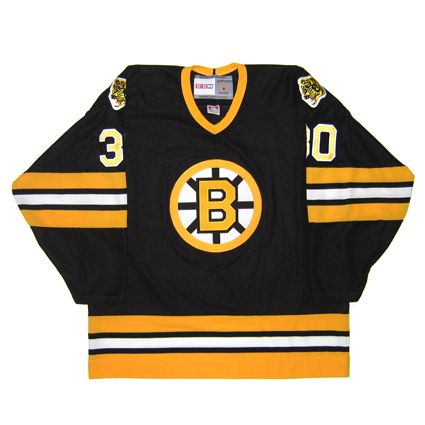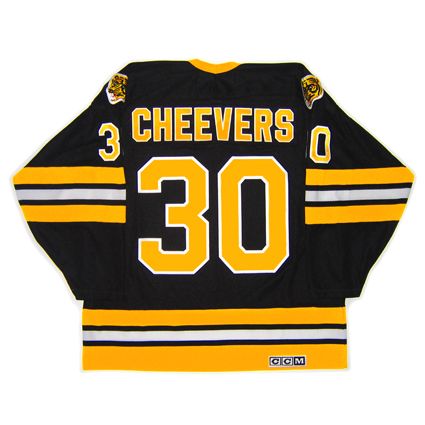After beginning his career in 1974 at the age of 15 with the Prince Albert Raiders of the Saskatchewan Junior Hockey League,
Brad McCrimmon, was named the SJHL Defenseman of the Year for the 1975-76 season
.
McCrimmon with the Prince Albert Raiders
He then joined the Brandon Wheat Kings of the Western Canadian Hockey League for the 1976-77 campaign and immediately became the team's highest scoring defenseman for the next three seasons, debuting with 18 goals and 84 points in 72 games in 1976-77. His offensive numbers increased to 19 goals and 97 points in 1977-78, but with the addition of 245 penalty minutes, earning WCHL Defenseman of the Year honors and showing NHL scouts he had toughness to go with his offensive skills.
The following season he was named team captain and set a career highs with 24 goals and 98 points as well as an additional 33 points in 27 games as Brandon made it all the way to the Memorial Cup Final, only to lose 2-1 in overtime in a game where McCrimmon logged an absurd
60 minutes and 38 seconds of ice time, only coming off for 2 minutes to serve a penalty! Following the tournament he was named to the event's All-Star Team.
His success with the Wheat Kings was recognized when he was named to Canada's World Junior teams in both 1978 and 1979, earning a bronze medal in 1978. Further recognition came when he was selected 15th overall in the first round of the 1979 NHL Entry Draft by the Boston Bruins.
He made his NHL debut on October 11 later that same year, bypassing the minors entirely. He would finish the season with 5 goals and 16 points along with 94 penalty minutes as a rookie as well as seeing his first NHL playoff action, starting a streak of 13 consecutive seasons of post season play.
McCrimmon made his NHL debut with Boston
McCrimmon would show more of his offensive game in 1980-81, with 11 goals and 29 points, but would also firmly establish his reputation for defense and toughness with an NHL career high 148 penalty minutes and a +27 rating. After one more season in Boston, where he totaled a mere 9 points and was a +4, McCrimmon was dealt to the Philadelphia Flyers in exchange for goaltender
Pete Peeters.
The move benefitted McCrimmon, as he was freed from playing with and being compared to
Ray Bourque. His offensive numbers immediately returned to the mid-20's and a +24 rating. Two seasons later, his offensive game went to another level with 8 goals and 43 points and he posted an NHL top five +52 rating. While the Flyers reached the Stanley Cup Finals, it was without McCrimmon, as he was knocked out by a separated shoulder earlier in the playoffs that required surgery to repair.
There were no long lasting effects from the injury though, as McCrimmon, nicknamed "Beast", returned for 1985-86 with NHL career highs in goals (13), assists (43) and points, with 56, as well as an outstanding +83 rating, second in the league only to teammate
Mark Howe.
McCrimmon set many career highs with the Flyers,
note the #31 on the left shoulder of this jersey
After missing the start of the 1986-87 season due to a contract dispute, McCrimmon returned to hit double digits in goals with 10 on his way to 39 points and another strong +45 rating. The Flyers again made it to the Stanley Cup Finals, only this time with McCrimmon along the entire way, as he contributed 3 goals and 8 points in 26 games, which would be his last for Philadelphia.
Prior to the start of the 1987-88 season, McCrimmon was traded to the Calgary Flames, who already boasted a strong defensive corps with
Al MacInnis,
Paul Reinhart,
Gary Suter and
Ric Natress. His debut season in Calgary saw McCrimmon score 42 points as well as leading the NHL with a +48 rating. That season he also played in the NHL All-Star Game in St, Louis.
His offensive numbers would not reach those levels again, but for 1988-89, McCrimmon led all NHL defensemen with a +43 during the regular season. In the playoffs, he would appear in 22 games as the Flames would reach the Finals where they would defeat the Montreal Canadiens in seven games to capture the Stanley Cup.
The 1989 Stanley Cup champion Calgary Flames
With
Lanny McDonald retiring following after their championship, McCrimmon was named the Flames captain for the 1989-90 season.
McCrimmon captained the Flames in 1989-90
He was traded to the Detroit Red Wings for the 1990-91 season following three seasons in Calgary. For his second year in Detroit, he was paired with a young
Nicklas Lidstrom. McCrimmon's focus was on the defensive end, allowing Lidstrom more offensive freedom, but he still had enough offensive opportunities to score 29 points in 1991-92, his highest since 1988. He also had a +39 rating and 118 penalty minutes, his highest total since back in 1981 with Boston, for easily his best of his three seasons with the Red Wings.
He would return to Detroit for the 1992-93, which included McCrimmon playimg in his 1,000th NHL game on this date in 1992, a 4-2 win over his former club the Flyers at home in Detroit.
McCrimmon during the 1992-93 season, during which
he would play his 1,000th NHL game
After the season concluded, the 34 year old veteran McCrimmon was once again traded, this time to the Hartford Whalers where he became a mentor for an 18 year old
Chris Pronger. While his offensive numbers were not what they had been over the last five seasons, they virtually bottomed out with his new role in Hartford, combined with a decrease in the number of games played with the Whalers, a combination of age and injuries catching up to him, as he averaged just 52 games and 5 points per season for the three years he spent with the Whalers. His defense was still stout however, as, despite the Whalers never making the playoffs due to their poor records, McCrimmon was a combined +15 during his time with the club.
McCrimmon while with Hartford
With his contract up in Hartford, he would sign with the Phoenix Coyotes for the final season of his career, during which he played 37 games before retiring as a player following the season.
McCrimmon would play his final NHL season with Phoenix
In all, McCrimmon would play 1,222 games, score 81 goals and 322 assists for 403 points and finish with a career rating of +444, a mark that still ranks as 11th best in NHL history and one of only 12 men to ever finish higher than +400. Once his student Lidstrom enters the Hockey Hall of Fame when he is first eligible in 2015, McCrimmon will be the highest ranking player in career plus/minus not in the Hall.
Not done with hockey, McCrimmon became an assistant coach with the New York Islanders in 1997 before becoming head coach for the Saskatoon Blades of the WHL in 1999. He returned to the NHL in 2000 with the Flames, again as an assistant for three seasons, From there, he joined the Atlanta Thrashers staff for another four seasons before he returned to the Red Wings from 2008-09 to 2010-11.
McCrimmon, after a dozen seasons of NHL experience as an assistant, took on a new position as head coach of Yaroslavl Lokomotiv of Russia's Kontinential Hockey League in hopes of building his resume to some day becoming a head coach in the NHL. Tragically, as the team was leaving for it's first game of the 2011-12 season, the team's plane crashed on takeoff, killing 44 of the 45 on board, including McCrimmon and the entire roster and staff of Lokomotiv.
Head coach of Lokomotiv Yaroslavl, Brad McCrimmon
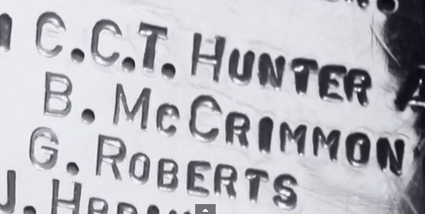 Brad McCrimmon's name engraved on the Stanley Cup
Brad McCrimmon's name engraved on the Stanley Cup
Today's featured jersey is a
1985-86 Philadelphia Flyers Brad McCrimmon jersey as worn by McCrimmon during the season he set career best numbers in goals (13), assists (43), points (56) as well as plus/minus with a +83 rating.
This style jersey can be traced back to the first Flyers game in 1967, but a series of tweaks and modifications over time saw it evolve to this exact version beginning with the 1983-84 season when the stripe above the name changed from arched to horizontal. From there, it would remain unchanged until the conclusion of the 2000-01 season when the orange jerseys were dropped in favor of their black alternate version, ending a 34 year run for the Flyers wearing an orange jersey.
This particular year the jerseys carried the #31 on the left shoulder in memory of goaltender
Pelle Lindbergh, who died in a automobile accident.
Bonus jersey: Today's bonus jersey is a
1987-88 Calgary Flames Brad McCrimmon jersey as worn his first season with the Flames, the team he would win the Stanley Cup with and later captain. This jersey features the 1988 Calgary Winter Olympics patch worn in anticipation of the upcoming Olympic Games, for which the Olympic Saddledome was built.
The original Flames jerseys came with the franchise from Altlanta in 1980-81 and remained in use until a modernization, which added black trim, came onto the scene in 1995-96.
Extra Bonus Jersey: Today's extra bonus jersey is a 2011-12 Calgary Flames Brad McCrimmon tribute jersey as worn by the Flames on January 31, 2012 when Calgary honored the former Flames captain, assistant coach and Stanley Cup winner with a tribute ceremony following which, everyone was asked to observe a "moment of applause" to recognize his contributions to the sport of hockey.
During the pre-game warmups, each Flames player wore a special jersey with their own number on the sleeve, but McCrimmon's name and Flames number 4 on the back, which were then auctioned off for charity.
Flames captain Jarome Iginla
wearing the McCrimmon #4 tribute jersey
Following the Lokomotiv Air Disaster, the Detroit Red Wings paid tribute to McCrimmon, defenseman Ruslan Salei and goaltender Stefan Liv with a tribute patch to the three former Red Wings for the 2011-12 season.
Red Wings captain and McCrimmon's former defensive parter Lidstrom
wearing the memorial patch just above the left sleeve nubmer
Today's video section, the Flames pay tribute to McCrimmon on January 31, 2012 with this video of his career, including comments from several of his former teammates.
Next, the Red Wings pay tribute to McCrimmon.
The tributes continue to roll in with Ron MacLean and Don Cherry, who focus on the incredible list of Hall of Fame defensemen who partnered with McCrimmon.
In some rare footage, McCrimmon in the very first fight of his NHL career against
Michel Goulet of the Quebec Nordiques on November 22, 1979.
Here, McCrimmon electrifies the home crowed when he scores a goal during Game 3 of the 1987 Stanley Cup Finals.
In this next video, McCrimmon scores his first goal as a member of the Red Wings, which came in the playoffs after not scoring any during the entire regular season.
Finally, we hear from the man himself, who was the subject of an episode of "Coaches", shown here in four parts.
For an excellent article on McCrimmon's family one year after the disaster,
click here.

